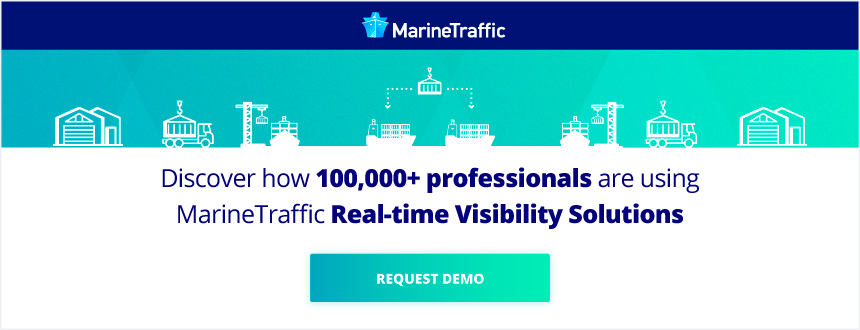This blog post was updated on 15/4/2020
MarineTraffic data continues to transform the way in which commodity traders make decisions and big calls.
The commercial insights which can be derived from understanding vessel movements and overlaying this with other sources of intelligence has put AIS data at the heart of trading floor systems in London, Geneva and New York.
What started as a basic IMO safety service, has been harnessed by freight and commodity traders to manage their sea freight commercial risks. AIS allows traders to better understand freight pricing by understanding shipping supply and demand imbalances.
MarineTraffic live and historical data can help freight traders answer some questions which are fundamental to their ability to make the right calls.
Starting at the top, the trader has the ability to dive into the data and look at the fundamentals of any particular route. So for example, the growing Brazil to China Panamax grain trades can be put under close analysis.
- How many sailings have there been of grain loaded Panamax vessels between Santos and Qingdao in the past 24 months?
- How is this trade growing and how does it compare to Mississippi loadings?
- What is the average port waiting time?
If AIS is overlaid and cross-referenced with other data such as commodity pricing, freight rates, weather patterns and other tracking data such as rail or truck movements, then a very full picture begins to emerge. What used to be a matter of guesswork is now based on real evidence.
Sitting within the huge MarineTraffic AIS dataset are the answers to the questions asked by any commodity trader.
- Do my competitors run a more agile operation than me?
- Which ports and terminals face congestion issues?
- Will my targeted berth be available on time?
MarineTraffic has been up and running for 12 years and has built a huge database of historical vessel movements.
On a day to day basis, AIS data is particularly useful when working with homogenous cargo types such as coal, grain, iron ore and crude oil. By comparing a vessel’s build specifications, such as its draught, with the depth of the ship’s keel below the waterline, you get an indication of whether or not the ship is loaded. Being aware of the loading/discharging terminal berth type, you have a notion of the type of cargo being loaded or unloaded.
AIS may be ubiquitous, but not all AIS data is the same. Broadcast over a high-frequency radio network, AIS can be picked up by anyone with a receiver. MarineTraffic combines its own international shore-based network of stations with the Orbcomm satellite network.
Simply publishing the raw AIS data, as it is received from the ships, is not enough. MarineTraffic also employs a combination of both algorithms and back-office staff to ensure that the data made available to the end user is clean, accurate and useable.
Related: Improving accuracy on Calculated ETA

Much of the information transmitted by a ship in its AIS broadcast is manually entered by the crew on the bridge, and is therefore subject to human error or even deliberate manipulation.
Basic details such as the destination port are entered in different ways: just take Rotterdam. We have seen R’dam, Rdam, Roterdam, R-dam and many other combinations entered by time-pressed deck officers. Entering or leaving a port is a particularly fraught time for any bridge team and details are sometimes not entered until days into the voyage.
That’s why MarineTraffic offers predictive services to clients. The predictive arrivals service allows users to predict which vessels are most likely to travel to a port or particular geographical area. These predictions are based on a range of factors including past vessel movements in the area, across markets and ship type. The top five most probable destination areas are provided within each response with a probability score for each port or geographical area.
For further details of MarineTraffic commercial services see www.marinetraffic.com/online-services/

